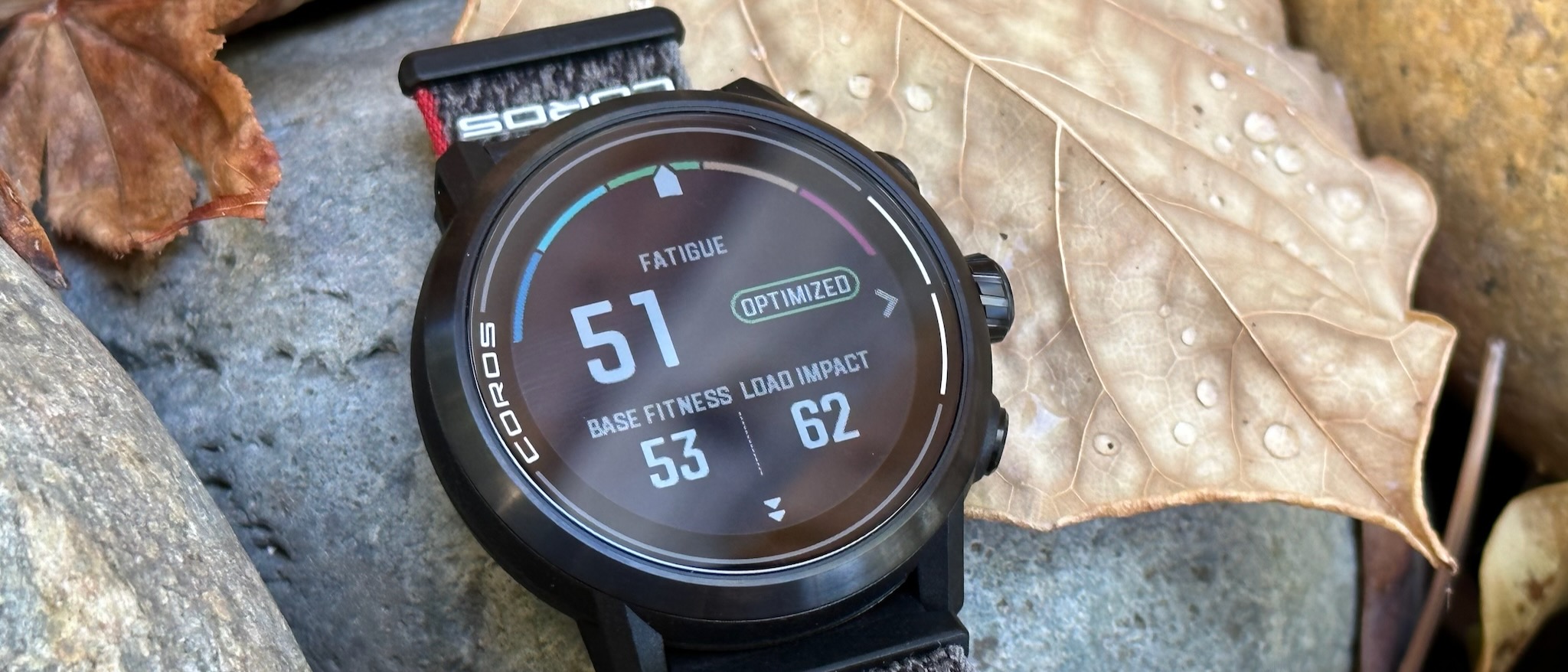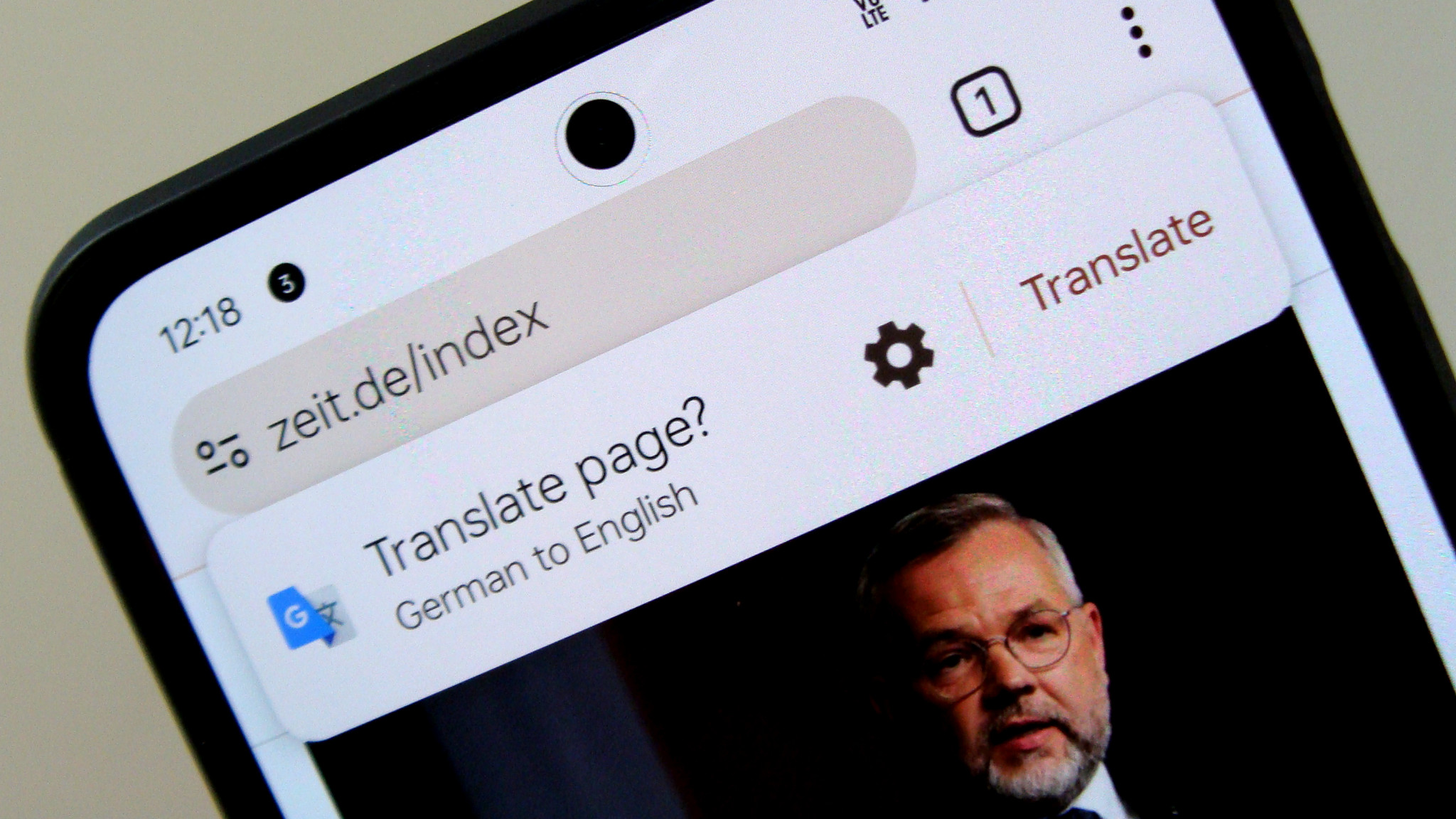Android Central Verdict
The COROS APEX 2 continues the brand's tradition of packing fantastic value into its fitness watches. It gives a more complete experience than the Pace 2 and only falls short of the APEX 2 Pro in a few key areas: battery life, GPS accuracy, and storage size. But since the APEX 2 performs very well in those areas, it's the watch most people should choose.
Pros
- +
Both touchscreen and digital dial for navigation
- +
All-Systems GNSS
- +
17 days/ 45 GPS-tracked hours of battery life
- +
In-depth COROS EvoLab metrics
- +
Titanium bezel/ Sapphire Glass
Cons
- -
Thick case
- -
Not everyone will like nylon strap
- -
No continuous HRV, SpO2 data
- -
Apps and settings can be annoying to access
Why you can trust Android Central
Since I reviewed the COROS PACE 2 last fall, I've tested fitness watches and trackers from Garmin, Polar, Fitbit, Amazfit, and Samsung, giving me a much clearer picture of how well different brands cater to athletes' needs. So I was very excited to test out the COROS APEX 2 with a clearer picture about how the running enthusiast brand holds up against the competition.
A mid-range, multi-sport outdoors watch, the COROS APEX 2 has the thick, hardcore look of many running watches in this price range, except with some perks like a touchscreen, titanium finish, offline maps, music storage, and all-satellite GNSS tracking that you'd normally expect to spend hundreds more to get.
Falling in the same price range as the Garmin Forerunner 255 and Polar Pacer Pro, the COROS APEX 2 is a watch that any dedicated runner should seriously consider, as it more than holds its own against them. From its marathoner training plans to hardcore metrics, COROS has the tools you need to guide you to a faster PR. And aside from a few quirks that might put off some buyers, the APEX 2 is a great delivery vehicle for those perks.
COROS APEX 2: Price and availability
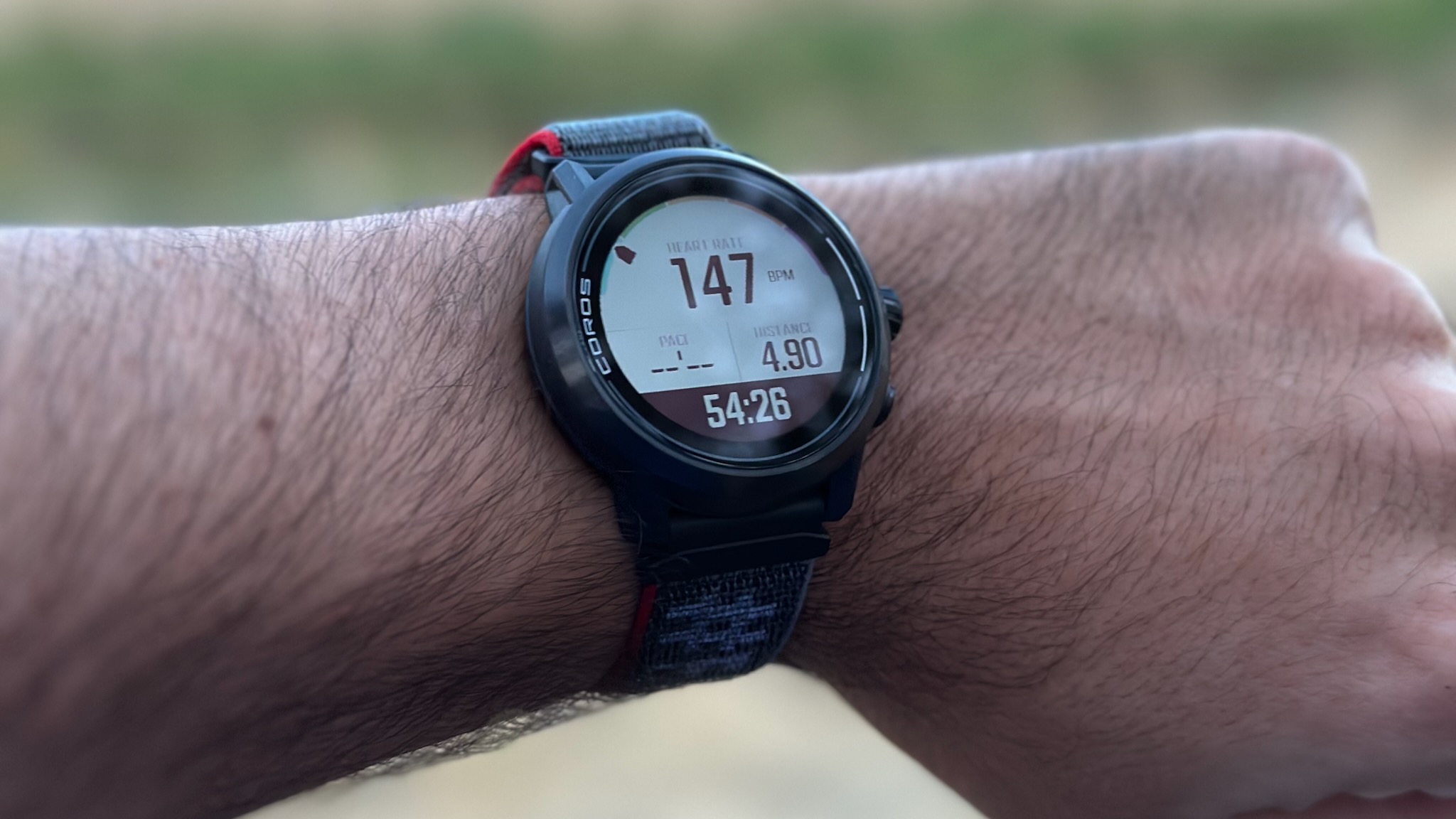
The COROS APEX 2 opened up to pre-orders starting on November 3, with availability in the United States, United Kingdom, Canada, France, Germany, Australia, China, and Japan. COROS has told us that the APEX 2 will first only be available from coros.com for 1-2 weeks before coming to Amazon and other retail sites.
The COROS APEX 2 price will be $399 / £419 / €479 / $579 CAD / $649 AUD. Upgrading to the APEX 2 Pro, which we'll also have a review for shortly, will cost you about $100 extra depending on your region.
In addition, COROS will sell alternate nylon and silicone watch bands for $29. You can buy either material in black, gray, or green; nylon also comes in coral, or you can choose silicone in navy or khaki.
COROS APEX 2: Design and hardware
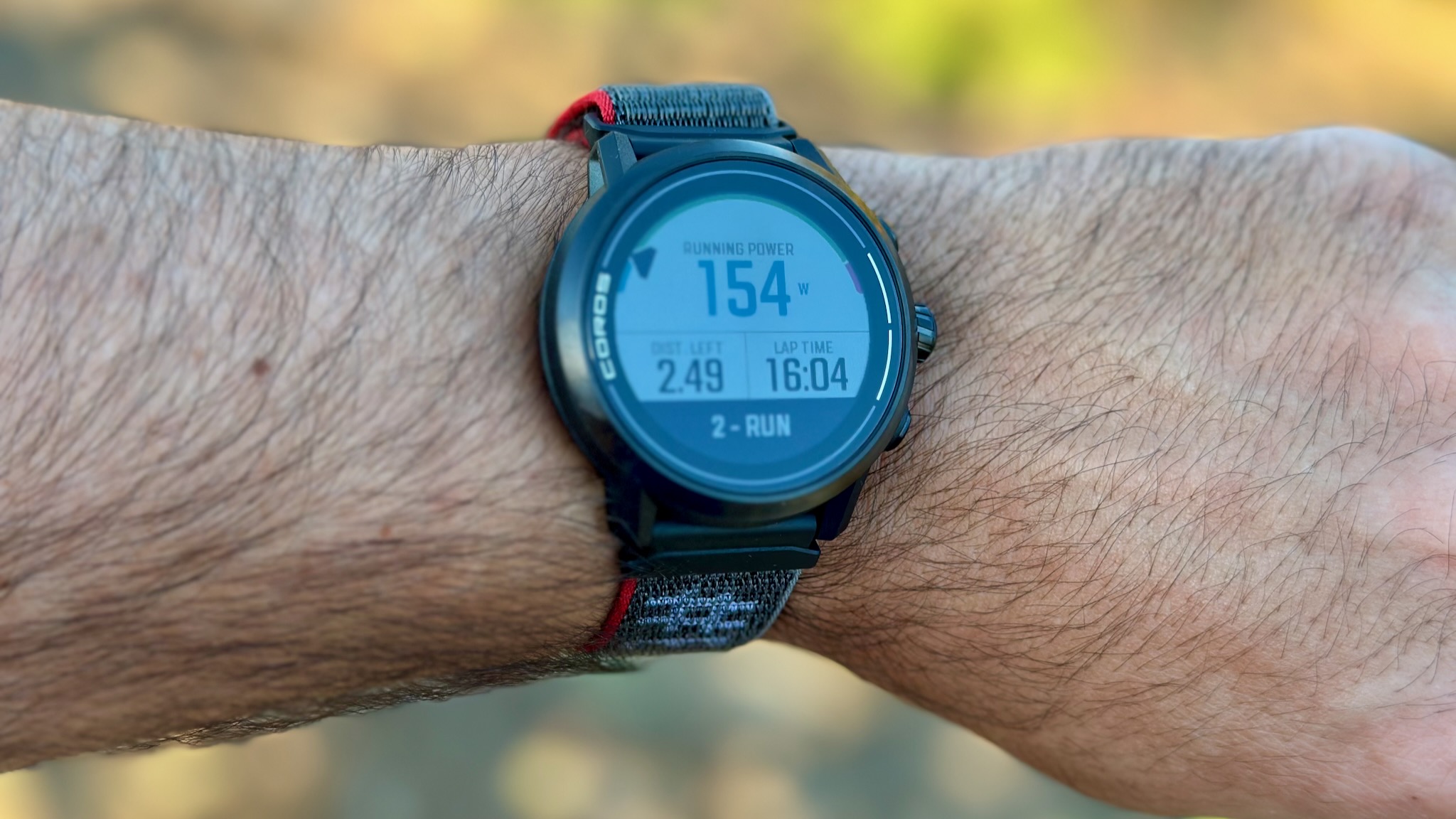
The COROS Apex 2 exhibits how much a watch band can change your fitness smartwatch experience. With a 43mm titanium case that's a whopping 14.6mm thick, it's noticeably thicker than most running watches, nearly as thick as the unwieldy Galaxy Watch 5 Pro and slightly thicker than the Garmin Forerunner 955.
But it weighs much less than both. A typical Android smartwatch obviously weighs more because of the CPU and RAM, but I'd bet the 10g difference between the 42g APEX 2 and 52g Forerunner 955 mostly comes down to the strap. You notice the APEX 2 on your wrist, but not as much as you might expect.
Unlike a silicone strap with set points that you must carefully adjust to your wrist every time, the nylon strap lets you pull until it's tight and just like that, you have a near-perfect fit, which especially helps for accurate sensor readings.
Nylon absorbs water while silicone repels it, but I haven't had a serious issue with it during runs; any sweat simply cools off my wrist and then burns off in the sun. If you live in a rainy area or do lots of sweaty cross-training, though, you may want to buy a silicone strap and accept the extra weight.
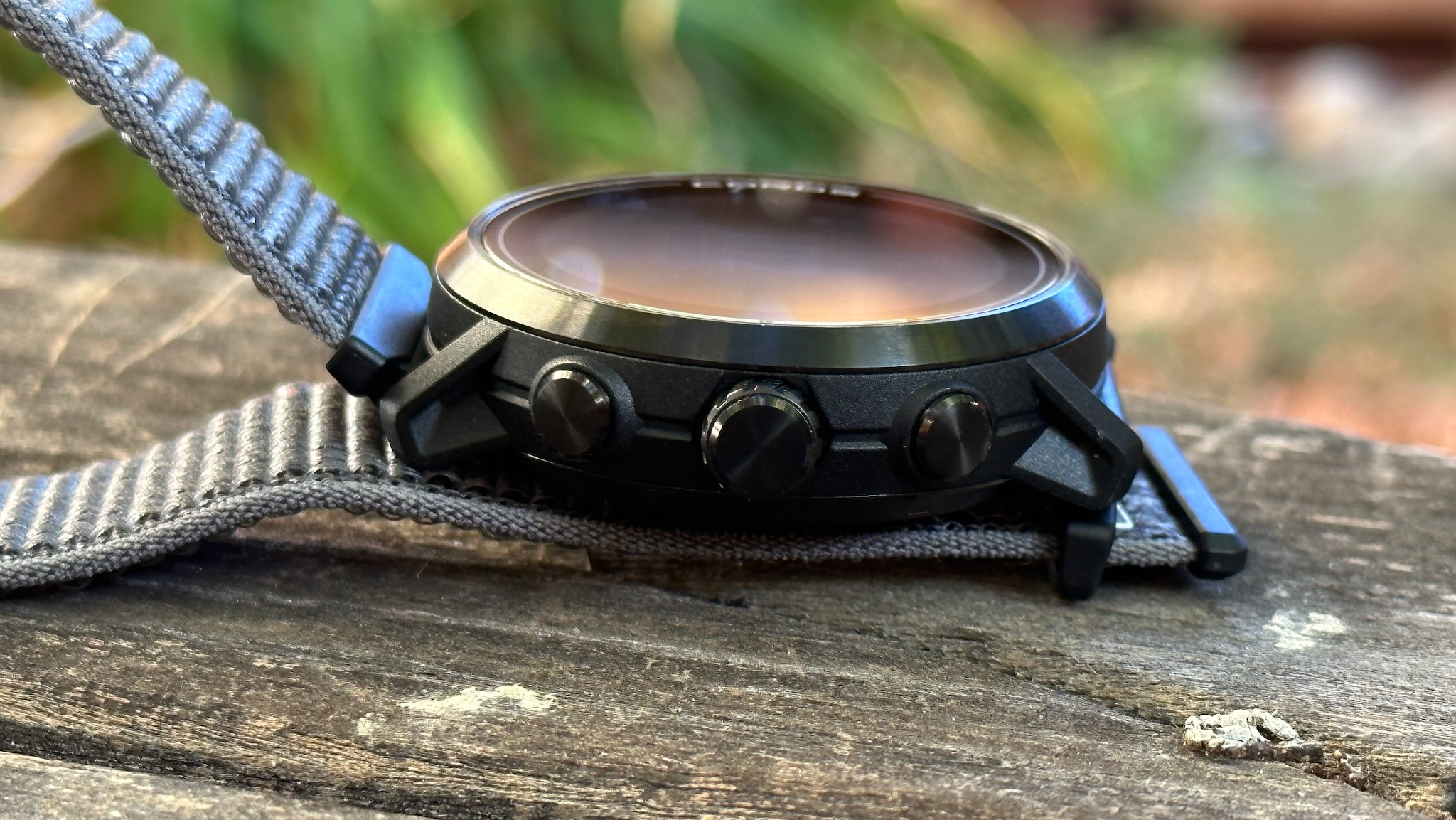
As for the watch itself, COROS used premium titanium for the bezel and case, along with PVD coating on the bezel that's supposed to be twice as scratch-resistant as its standard titanium.
The display has Sapphire Glass for scratch-resistance, which apparently helped when I dropped the APEX 2 on a rock while taking photos of it. No scratches or cracks yet! Plus, you get the industry-standard 5ATM water resistance.
Unlike most watches in this price range, the APEX 2 has a touchscreen. Unfortunately, I don't see much reason to use it much. During workouts, the digital dial is easier to use than my sweaty fingertips. Outside of workouts, I find that the display doesn't always register my swipes, and I often find it annoying to swipe one by one through menu options when turning the dial is easier and more accurate. But hey, at least the option is there for fans of touch over tactile.
On that topic, I'd describe the APEX 2 digital dial as conveniently functional. I much prefer it to the up/down buttons found on many fitness watches because of the accuracy and simplicity of scrolling without having to press down on buttons while running. Unlike the protuberant Pixel Watch crown, the APEX 2 dial is more compact, so you must turn it a bit more deliberately; but that's mainly an issue when scrolling through a ton of menus, when the touchscreen may be more natural.
| Category | APEX 2 specs |
|---|---|
| Colors | Black, Gray, Coral |
| Display | 1.2-inch (240x240) Touch Memory-in-Pixel LCD with Sapphire Glass |
| Bezel/ Case material | Titanium |
| Watch band | 20-22mm Quick Fit Nylon |
| Dimensions | 43 x 42.8 x 14.6mm |
| Weight | 42g/ 1.48oz |
| Storage | 8GB |
| Sensors | Optical heart rate, pulse oximeter, ECG, barometric altimeter, accelerometer, gyroscope, compass, thermometer, wear detection sensor |
| Tracking | GPS/QZSS only OR All Systems with GPS, QZSS, GLONASS, Galileo, BeiDou |
| Water resistance | 5ATM |
| Sports modes | Run, Indoor Run, Trail Run, Track Run, Hike, Mountain Climb, Bike, Indoor Bike, Pool Swim, Open Water, Triathlon, Gym Cardio, GPS Cardio, Ski, Snowboard, Cross-country Ski, Ski Touring, Multisport, Strength, Training, Speed surfing, Windsurfing, Whitewater, Flatwater, Rowing, Indoor Rower, Jump Rope, Walk |
COROS added the standard sensor suite you'd want on a fitness smartwatch, including an electrocardiogram (ECG) for testing heart rate variance, blood oxygen (SpO2) testing that gives you hourly scores for altitude adjustment above 8,250 feet, and both an accelerometer and gyroscope for accurately measuring your arm movement during specific sports modes like swimming or jump roping. Plenty of watches don't include the gyroscope and hope you won't notice the reduced accuracy, but you'll appreciate it for multi-sport tracking.
In terms of what it can't measure, the COROS APEX 2 thermometer only measures its surroundings, not skin temperature like the Fitbit Sense 2. And you can only spot-check HRV or specifically check SpO2 with Altitude mode; there's no passive irregular heart rate testing like you get with other brands, nor blood oxygen checks for standard sleep tracking or continuous tracking.
The latter seems like a waste, since the APEX 2 has the battery life to support continuous SpO2 data. I asked COROS if that's something it would ever add in the future, but didn't receive a response.
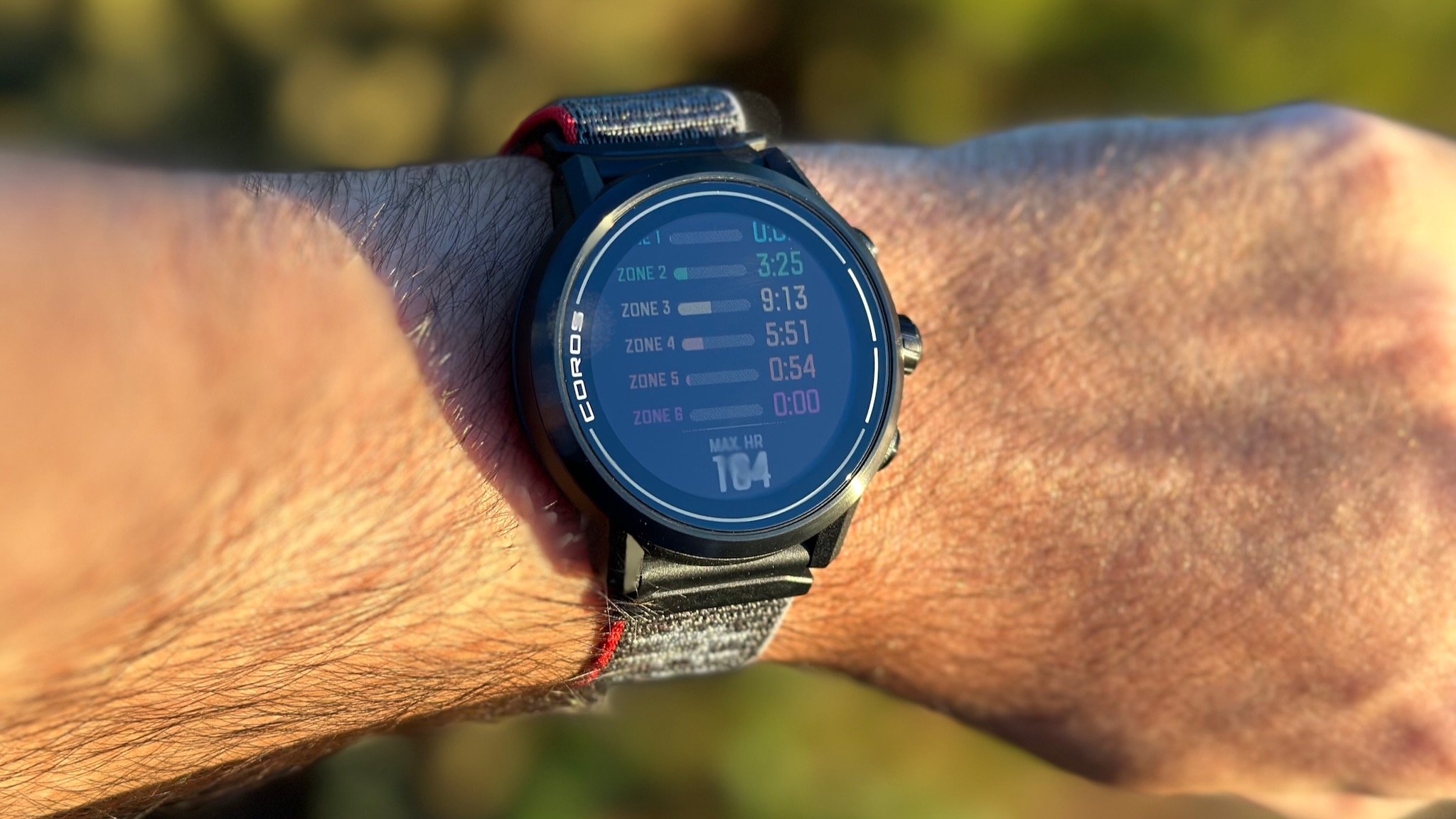
If you ignore the window-dressing sensors, all that will matter to most users is the optical heart rate monitor (HRM) accuracy. And on that topic, I've run into the issue of how little time I've had with the watch. In my few runs with it so far, it seems to be mostly very consistent, with only one moment late in a half marathon when my BPM inexplicably dropped 40 beats for a minute before climbing back up.
During that race, it matched fairly closely to the Garmin Forerunner 955 I wore on my other wrist across 2+ hours, consistently about 1-2 bpm lower in its reading both in average and spot-checking specific time markers; but I can't say which is the more accurate without further testing. I'll have more to say on this in a week or two.
We'll discuss battery life and GPS tracking below, so to round out the hardware discussion, the COROS APEX 2 does have 8GB of internal storage for music — 6.58GB once you subtract other stored data, according to my computer — that you must add by connecting the watch to your computer and dragging .mp3 files directly into the hard drive.
Then, you just connect your favorite wireless earbuds or speaker via Bluetooth and shuffle through one giant playlist of local files. COROS says it's working to bring streaming services in 2023, but I'd say count on needing your own music for the short term, and just pick a good playlist of a thousand or fast-tempo songs (give or take a few hundred depending on your music library's quality).
COROS APEX 2: Software and UI
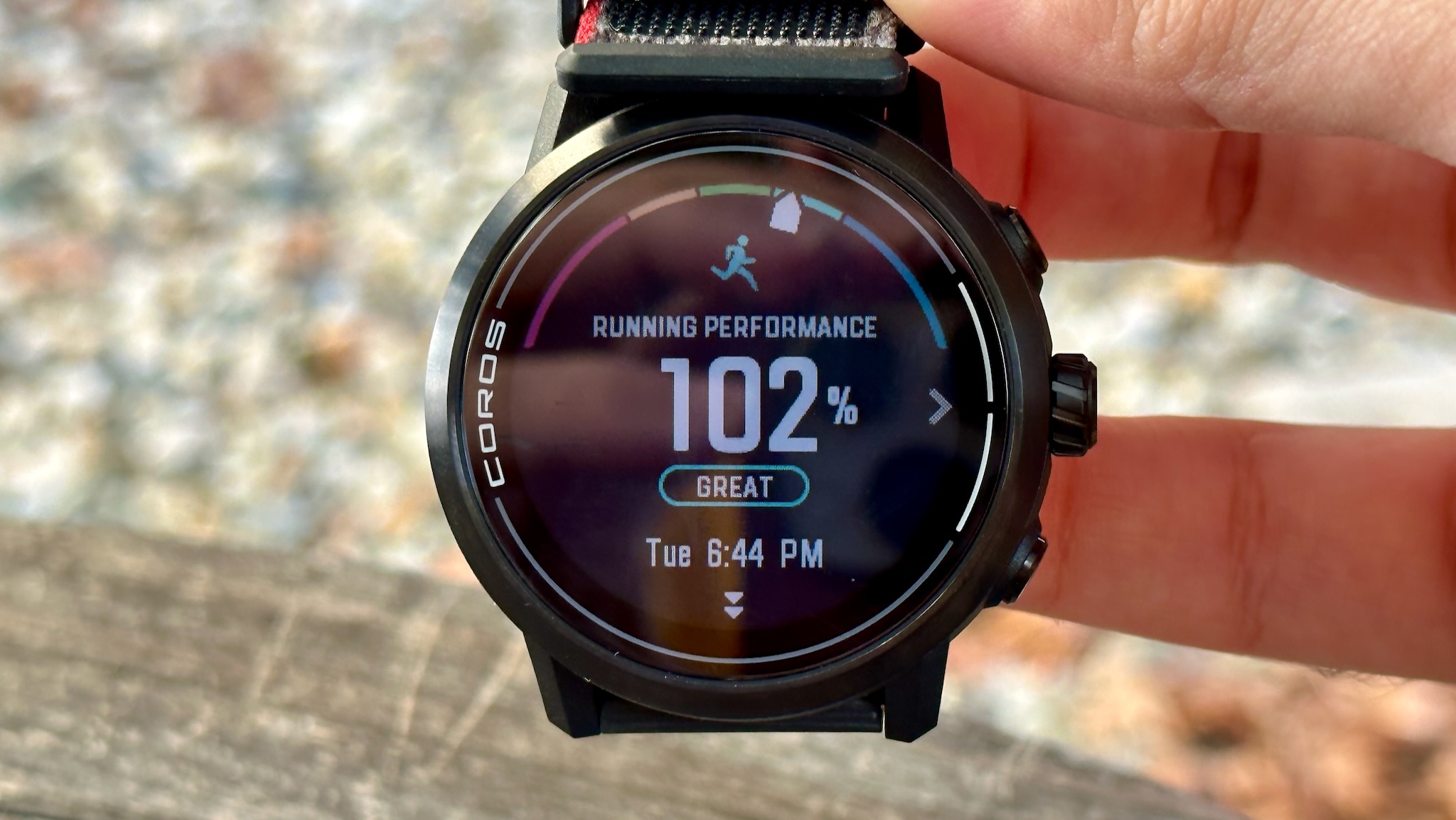
The COROS software backing the APEX 2 might be its greatest strength; but I'll admit that the COROS watch's user interface (UI) is arguably one of its weaknesses.
First, the positives. From 2021 onwards, COROS launched EvoLab as a free tool to measure and quantify your performance and fitness level, then rolled out a Training Hub that makes your workout history easier to search and lets you compare results against other runners or receive remote coaching. Most recently, it launched Effort Pace, a time-per-minute score that "accurately reflects your true effort." COROS says Effort Pace is more understandable and motivating to runners than the traditional "running power" stat, which I've personally always found too inscrutable to be useful.
Once you finish a running workout, COROS will inform you of your (effort) pace, time spent in aerobic, anaerobic, or threshold effort based on your heart rate zones, average cadence and stride length, running power, elevation gain, training effect, and mile lap times. All the data you need is laid out in painstaking detail.
More generally, COROS takes your sleep data and workout history to give you a Fatigue score, VO2 Max score, a race predictor for your 5K, 10K, half, and full marathon distances, and 7-day training load.
To hit your goals, you can download COROS training plans that appear in the app calendar, with specific workouts and intervals that you can select to start when you open the workout menu. The APEX 2 will beep at you if you don't stay within the parameters of the workout, such as running power, heart rate, % threshold pace, or cadence. I'm currently using a marathon training plan to up my mileage, which I appreciate because Garmin Coach only goes up to Half Marathon guidance.
Comparing the APEX 2 to the Garmin Forerunner 955 I'm also currently reviewing, both are decently responsive to changes in pace during a guided run, but the Garmin buzzes your wrist when you're above or below pace, while the COROS beeps at you. As someone who finds strict guidance more distracting than helpful, I personally prefer the latter because it's easier to note the beep while looking ahead, while the vibrating Garmin compels me to check my wrist every time. Others will prefer the Forerunner for the opposite reason, however.
Long story short, the COROS APEX 2 has all the data and coaching I could want coming from my Garmin watch back to COROS, though it'll need a few more runs to properly capture my maximum capacity since it's only captured my data on long, slow runs. It also has the capacity to guide you on hikes with downloadable GPX maps and global landscape maps — though the APEX 2 Pro has the latter downloaded by default, and has much more storage room for local map data.
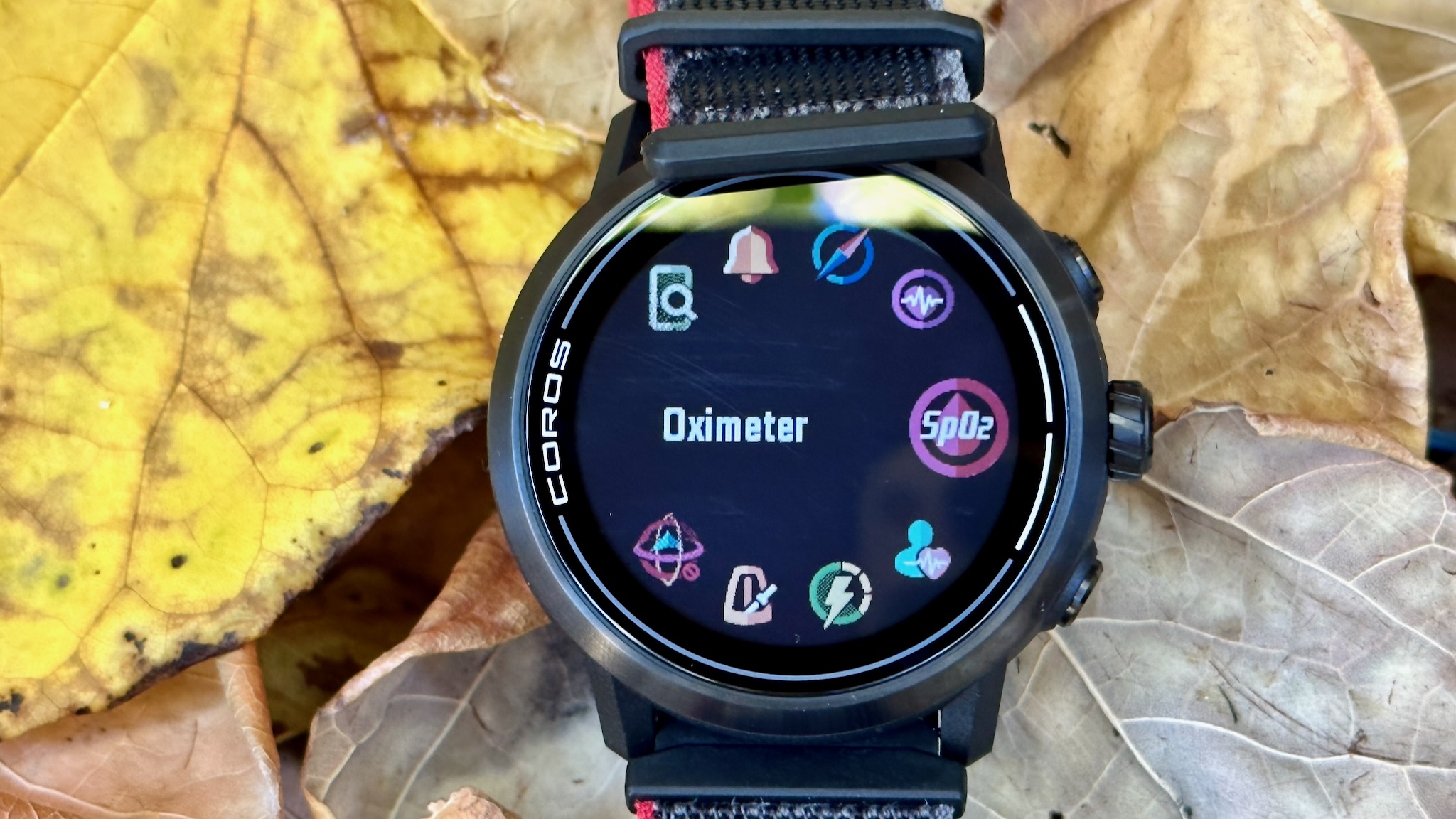
As for why I find the COROS APEX 2 user experience a bit frustrating, it's because the only easily accessible information on the watch is your Daily Data. It's an admittedly long list of 15 stats like burned calories, training plan, sleep time, and notifications that you can scroll through and select to see more in-depth information. If you want easy access to this info, you're in luck.
But to access your Toolbox — a collection of over 20 built-in COROS apps — you have to hold down the back button and then slowly turn the dial to navigate through them one by one. Settings, changing the watch face, testing your HRV or blood oxygen, maps, alarms, music, compass, and other useful tools take a ton of taps and scrolling to find and access.
Maybe the disabled touchscreen will make scrolling through the long list of apps easier. But ideally, you could use the touchscreen to scroll left and right from the home screen to access some of these tools, which would make them far more accessible.
As it is, your best bet is to customize the Toolbox to remove the more obscure apps so you can quickly scroll through your favorites. And you can add a long-press shortcut to the light button to access a few tools, which I bet most people will use for Music or Do Not Disturb. No other buttons have shortcuts, nor are there any double-press shortcuts.
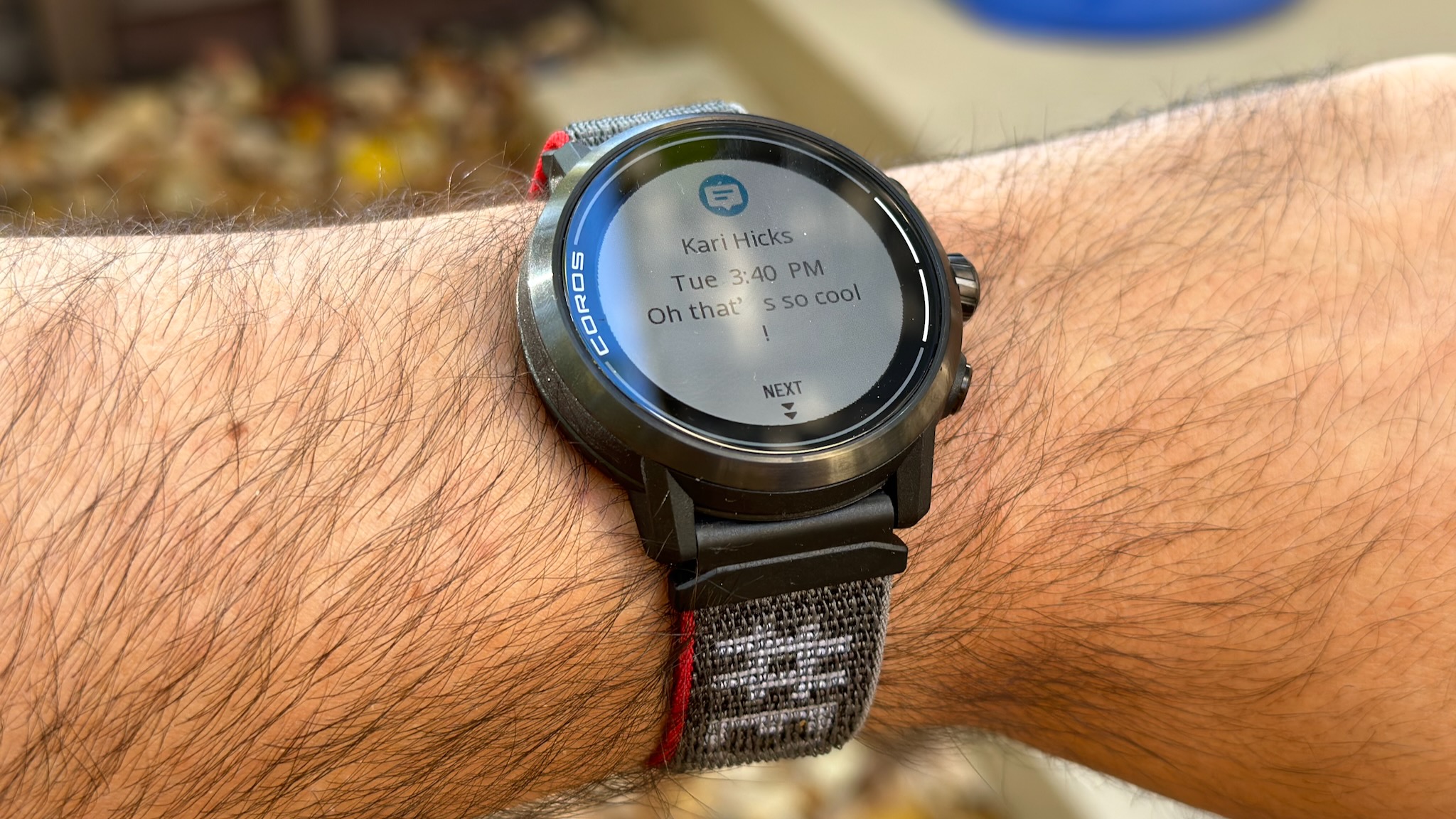
Coros lets you see (or disable) notifications for Calls, Texts, and Email from your default iOS/Android apps, as well as from a few key apps like Instagram, Twitter, and popular international apps like Weibo and Line. You can then disable "Other" notifications from any other app if you want to cut down on unnecessary buzzing, but that means you can't specifically include one unsupported app without bringing in the rest.
I've noticed text notifications have odd spacing around apostrophes and can't support emojis. You also can't respond to texts on your watch with default responses, as you can with Garmin watches connected to Android phones.
In the end, does the rather paltry UI matter? It'll vary from person to person. I personally am someone that doesn't typically wear any fitness watch much outside of workouts, so all I care about are the excellent fitness features. And other fitness-focused UIs like Garmin's and Polar's can be pretty bare-bones, too. But if you want an all-day watch with more useful and easily accessible smarts, you may want a lifestyle watch with fitness tools, instead.
COROS APEX 2: Battery Life and GPS accuracy
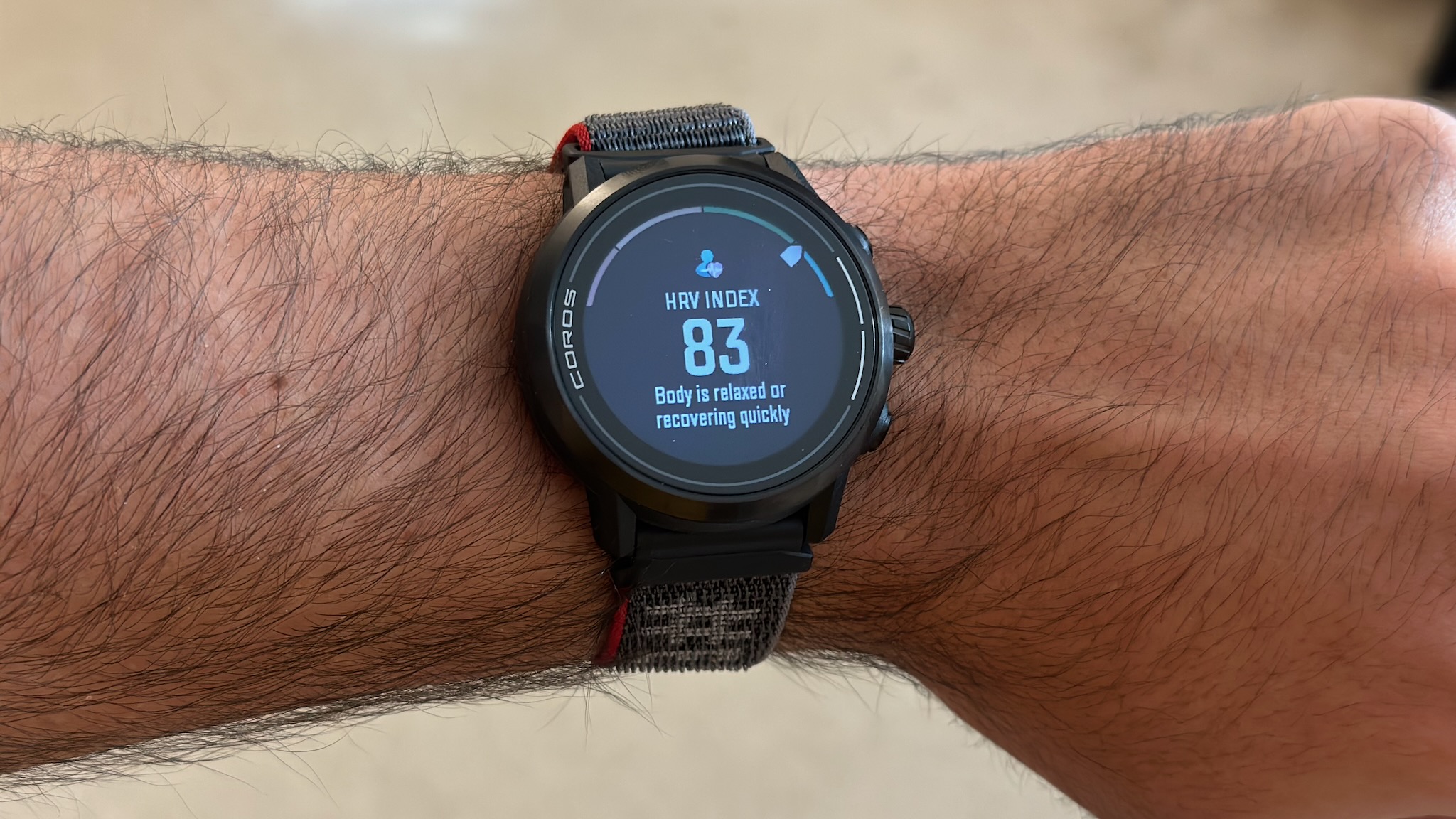
As with my early heart rate testing, this section is somewhat preliminary until I've had more time to test the COROS APEX 2, both in terms of its longevity and its accuracy during workouts. So far, the results for both have been promising but not necessarily perfect.
The APEX 2 added All Systems GNSS mode, meaning it pings GPS, GLONASS, Galileo, Beidou, and QZSS simultaneously; other "all systems" modes we've tested only use two satellite systems at once, in actuality, making the COROS system promising. You don't get dual-frequency GPS without upgrading to the APEX 2 Pro, however.
Thus far, All Systems hasn't quite lived up to my expectations. On the plus side, I haven't seen a single instance of tracking data clearly being lost, as lines always flow smoothly without jagged edges and mostly follow my path. But I do notice that when you zoom in on my workout maps, I frequently appear to the left of my actual position, putting me off the trail, in the middle of the road, or in nearby rivers or trees.
Again, I asked COROS if this is an issue they're aware of, and they didn't respond yet. They did tell DC Rainmaker that buying the $100 COROS Pod 2 accessory will help smooth out GPS results, but he didn't find that it did so significantly. You'll likely want to just upgrade to the APEX 2 Pro for dual-frequency tracking instead, if this is a concern.
If you ignore the mapped data and focus solely on distance and pace, my results almost exactly matched my Garmin Forerunner 955 using All-Systems + Dual Frequency. So for realistic workout results in terms of fitness alone, COROS gives you what you need, more or less.
For battery life, COROS promises the APEX 2 will last 17 days with standard usage, up to 45 hours in GPS-only mode, or 28 hours in All-Systems mode. These numbers are absurdly good, especially for a watch with a touchscreen.
Looking at the best running watches, most only last around 20-35 hours in GPS mode, and even the solar-powered Garmin Instinct 2 has a 48-hour GPS lifespan. The closest APEX 2 equivalent in my mind, the pricier and heavier Garmin Forerunner 955, lasts 42 hours or 31 in All-Systems mode.
By and large, the APEX 2 battery life seems to fall slightly short of its battery estimates, burning through about 7% in two hours of All-Systems Mode. Most watches I test tend to fall short of company estimates by a few hours, but if you're concerned, the 45-hour GPS-only battery life crushes nearly every competing running watch on the market today. The only way you'll have to worry about the battery is if you frequently use music storage, which historically cuts a watch's lifespan by about half.
COROS APEX 2 vs. APEX 2 Pro vs. APEX 1 series
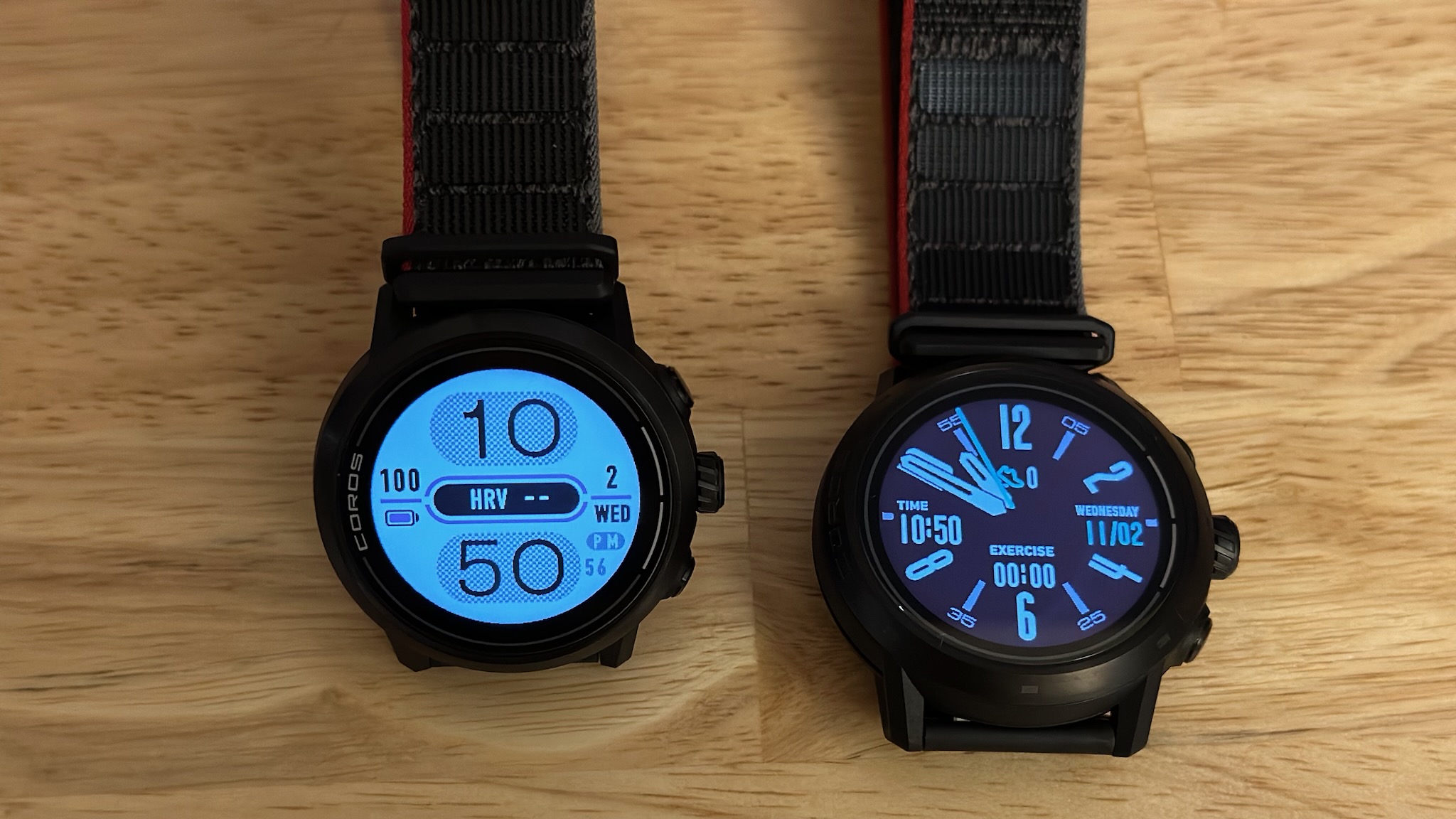
The COROS APEX 2 and APEX 2 Pro offer a significant step up over the previous generation of APEX watches. If you own the APEX or APEX Pro, you'll have plenty of tempting reasons to upgrade, bolded below.
Both newer APEX 2 watches add touchscreen support and more pixels per inch for the displays. Both generations used sapphire glass and a Grade 5 Titanium bezel, but the APEX 2 added PVD coating to the bezel for a supposed "2X scratch resistance," plus improves from aluminum to titanium for the cover material. The last generation used silicone bands, while this generation switched to nylon, likely to counterbalance the heavier weight.
The COROS APEX came in 42mm and 46mm case sizes, while the APEX 2 only ships with a 43mm case size and measures about 2.5mm thicker than its predecessors, while also weighing about the same despite the switch to the nylon band. Part of that weight difference could be the battery life increase: the APEX 2 will last 45 hours with regular GPS usage while the Apex 1 only lasted 25-35 hours depending on size.
Along with a revamped optical heart rate sensor with wear detection, the APEX 2 adds hourly blood oxygen tracking for altitude adjustments — something only the APEX Pro had — and an electrocardiogram for HRV measurement. Plus, COROS claims the redesigned GPS antenna is 50% more accurate.
Other improvements include a dedicated second backlight button, music storage for MP3 files, offline map navigation, a Night Mode, and the ability to work down to -22ºF, a 36º improvement. But the original APEX did have a better 10ATM water resistance and support for ANT+ accessories, which you lose here.
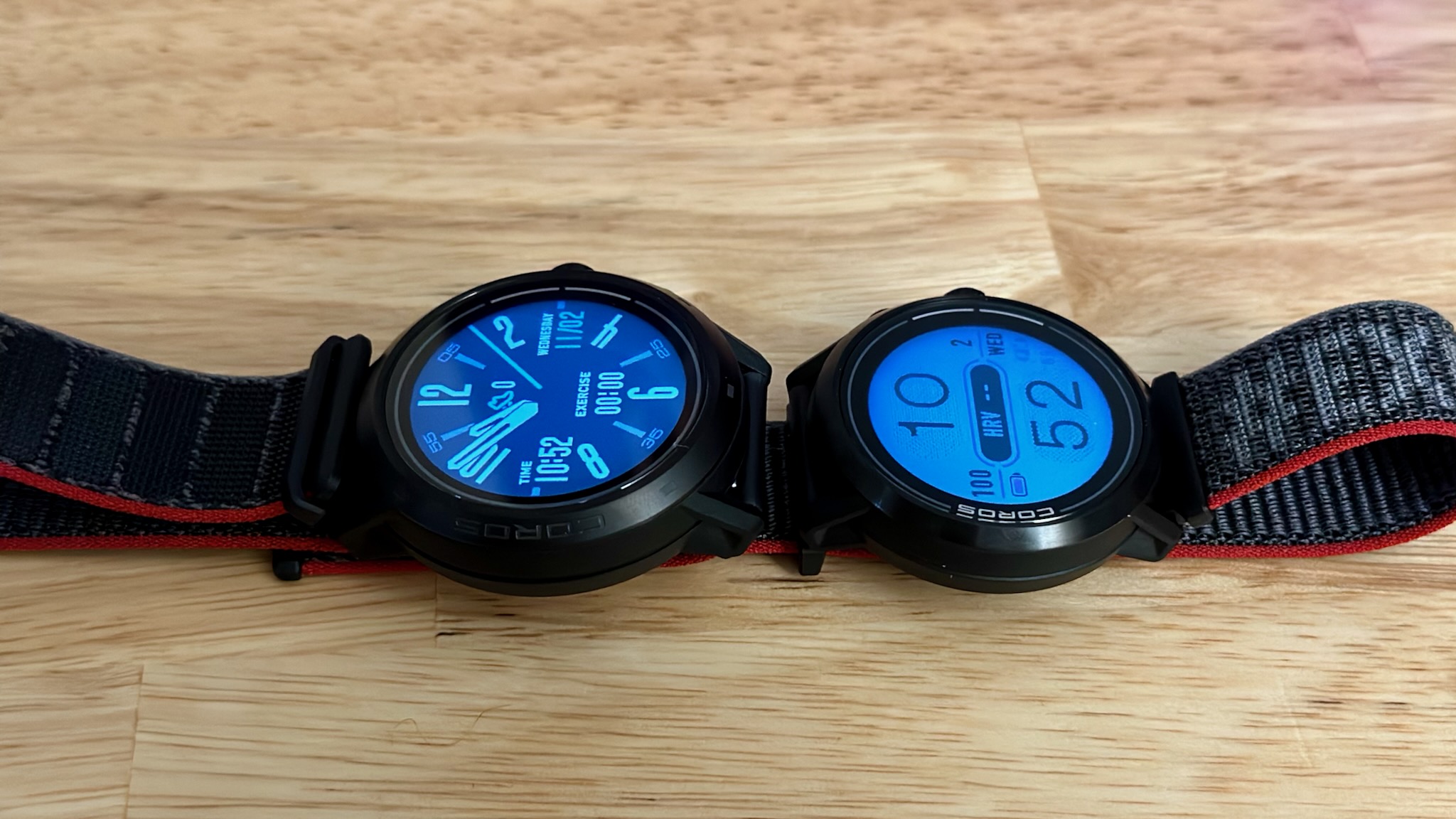
As for comparing the COROS APEX 2 vs. APEX 2 Pro, there aren't that many differences, though the few Pro upgrades will matter to, well, "pro" athletes.
The APEX 2 uses All Systems GNSS mode to ping several satellite systems at once, which COROS says suits areas like "cities near tall buildings, neighborhoods with significant tree canopies, or mountainous/hilly terrain."
Upgrade to the APEX 2 Pro, and you'll get Dual frequency + All systems, which pings both L1 and L5 satellite frequencies at all times. This mode is recommended for particularly rugged environments like cliff faces or mountain peaks where a large structure could block one satellite signal angle but not the second. And on that note, only the APEX 2 Pro has a Multi-Pitch Climbing Activity mode.
The APEX 2 Pro lasts 30 days with standard use or 75/45/25 hours with GPS, all systems, and dual frequency, respectively. The APEX 2 lasts 17 days, 45 hours, or 28 hours for smartwatch, GPS, and all systems, making it excellent against competing brands but not as much of a marathoner as the Pro.
Although both watches have music storage, the APEX 2 Pro has quadruple the storage at 32GB vs. 8GB.
With a 1.2-inch display and the same ppi as the 1.3-inch Pro, the APEX 2 weighs 11g/0.4oz less and measures 1.2mm thinner than the Pro. If you can do without the Pro's perks, the APEX 2 is going to be more comfortable and will last more than long enough for most users to charge it every 1-2 weeks.
The Competition

The two most comparable running or multi-sport watches in the same price range as the COROS APEX 2 are the Garmin Forerunner 255 and Polar Pacer Pro, both of which I've reviewed and enjoyed using in the past.
Garmin and COROS offer very comparable data packages, tracking your sleep recharge, training load, VO2 Max, and so on for free. The Forerunner 255 costs $50-$100 more depending on whether you pay for comparable music storage. It comes in 1.1- and 1.3-inch variants, so the 1.2-inch APEX 2 falls in the middle but gives you less versatility. With a standard polymer case and Gorilla Glass 3, the 255 isn't quite as sleek or scratch-proof, nor does it have a touchscreen. But it does have dual-frequency GPS, NFC for tap-to-pay, ANT+ support, dynamic suggested workouts, stress tracking, women's health tracking, and other unique perks.
The Polar Pacer Pro has the same size display but measures 3.6mm thinner and 1g lighter despite using a silicone band. The Pacer Pro has MIL-STD-810G fall protection and a 35-hour GPS battery life, though its idle time only lasts a week. It has an altimeter for hill workout tracking, but only tracks one GPS metric at a time and doesn't have an SpO2 monitor or gyroscope. It'll give you detailed running metrics like power and cadence, plus recommended workouts and a Running Performance Test to measure your current VO2 Max accurately.
COROS APEX 2: Should you buy it?

You should buy this if...
- You're training for long races and need guidance, either through self-guided workout plans or collaborative coaching.
- You never want to run out of battery life during a long run or hike.
- You want popular Garmin or Polar perks at a lower-than-average price.
You shouldn't buy this if...
- You want a watch that constantly monitors your health in the background.
- You need a specific missing feature like tap-to-pay or menstrual tracking.
- You're not a fan of bulky watches or want something petite for sleep tracking.
Until I have a bit more time to test the COROS APEX 2's heart rate monitoring, GPS accuracy, battery life, mapping, and touchscreen navigation, I can't definitively say how it matches up against other running watches. But my time with the watch has definitely been positive thus far, and COROS EvoLab alone is a tempting enough perk.
It's a vast improvement over the original COROS APEX in smarts, even if I had some frustrations with the UI. And so far, I'd certainly recommend the APEX 2 over the 2 Pro even if it means losing dual-frequency GPS and a couple dozen hours of GPS battery. The Pro watch has to compete in price against equally premium fitness smartwatches, while the COROS APEX 2 blows away its rivals in the same price zone.
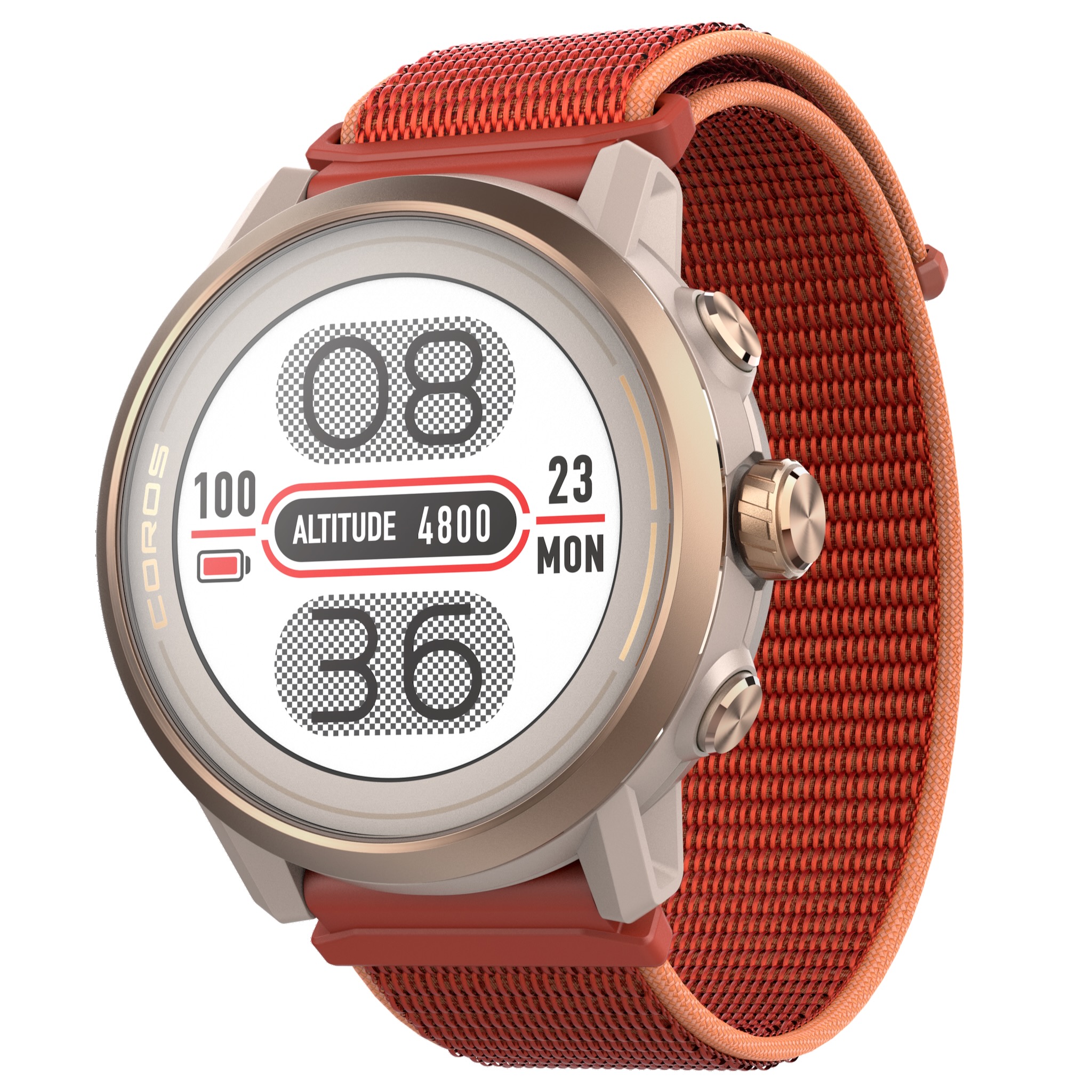
With high-quality materials, plenty of health sensors, enough music storage for a massive running playlist, multiple satellite systems to track your progress at once, and COROS EvoLab running metrics like training load and race predictions, the COROS APEX 2 is a high-quality watch any serious marathoner should consider.

Michael is Android Central's resident expert on wearables and fitness. Before joining Android Central, he freelanced for years at Techradar, Wareable, Windows Central, and Digital Trends. Channeling his love of running, he established himself as an expert on fitness watches, testing and reviewing models from Garmin, Fitbit, Samsung, Apple, COROS, Polar, Amazfit, Suunto, and more.
